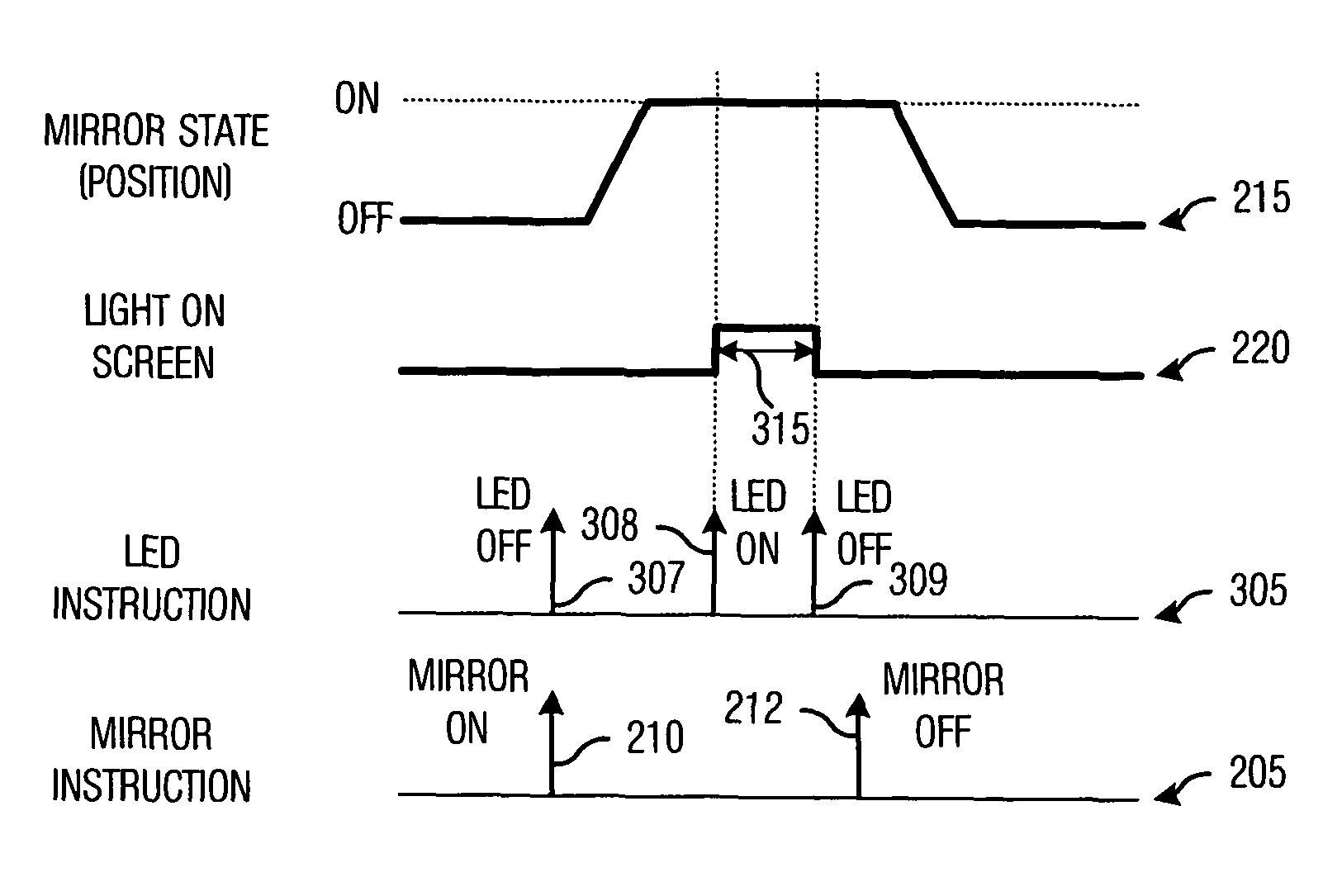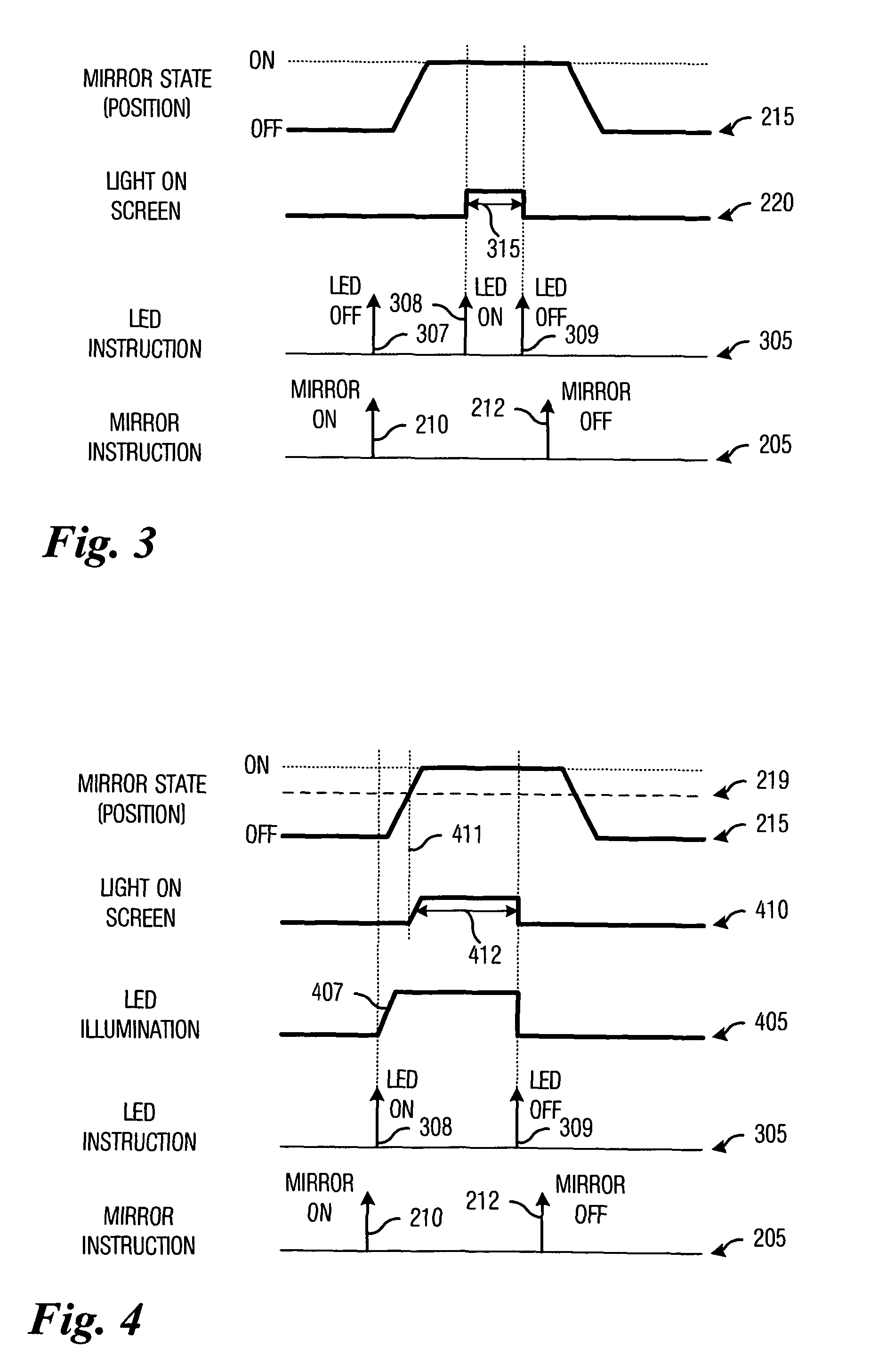Increased intensity resolution for pulse-width modulation-based displays with light emitting diode illumination
a technology of pulse-width modulation and intensity resolution, applied in the field of video display system, can solve the problems of reducing illumination for the entire time, limiting the speed at which the light modulator can be turned on and off, and unable to emit light with different intensity levels, etc., to achieve shorten the minimum amount of light produced, increase bit depth, and speed up the effect of ra
- Summary
- Abstract
- Description
- Claims
- Application Information
AI Technical Summary
Benefits of technology
Problems solved by technology
Method used
Image
Examples
Embodiment Construction
The making and using of the presently preferred embodiments are discussed in detail below. It should be appreciated, however, that the present invention provides many applicable inventive concepts that can be embodied in a wide variety of specific contexts. The specific embodiments discussed are merely illustrative of specific ways to make and use the invention, and do not limit the scope of the invention.
The present invention will be described with respect to preferred embodiments in a specific context, namely a binary SLM display system that makes use of mirrors as light modulators. The invention may also be applied, however, to other binary SLM display systems, wherein a light modulator is used to attenuate light intensity arising from a fixed light source. Examples of these binary SLM display systems can be display systems making use of liquid crystal display technology, liquid crystal on silicon technology, deformable mirror technology, actuated mirror technology, and so forth....
PUM
 Login to View More
Login to View More Abstract
Description
Claims
Application Information
 Login to View More
Login to View More - R&D
- Intellectual Property
- Life Sciences
- Materials
- Tech Scout
- Unparalleled Data Quality
- Higher Quality Content
- 60% Fewer Hallucinations
Browse by: Latest US Patents, China's latest patents, Technical Efficacy Thesaurus, Application Domain, Technology Topic, Popular Technical Reports.
© 2025 PatSnap. All rights reserved.Legal|Privacy policy|Modern Slavery Act Transparency Statement|Sitemap|About US| Contact US: help@patsnap.com



